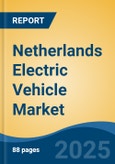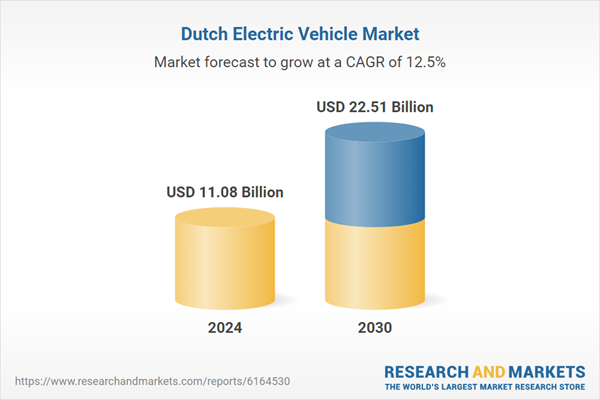Speak directly to the analyst to clarify any post sales queries you may have.
10% Free customizationThis report comes with 10% free customization, enabling you to add data that meets your specific business needs.
Surging demand for clean transport is intertwined with innovations across power electronics, energy storage, and charging networks, pushing the boundaries of performance and cost-effectiveness. The national electricity mix is transitioning, with Statistics Netherlands reporting that renewable sources contributed 46% of the nation’s total electricity production in 2024, creating a favorable backdrop for low-emission transportation. Consumer sentiment leans heavily toward green solutions, as ANWB noted in its 2024 survey that more than 65% of Dutch respondents are considering an EV as their next vehicle, reflecting shifting preferences away from internal combustion technologies.
Market Drivers
Government Incentives and Regulatory Push
Policies remain instrumental in stimulating EV adoption across diverse market segments. The Dutch government sustains substantial financial stimuli, including zero registration tax and reduced ownership tax for electric vehicles, confirmed by the Ministry of Infrastructure and Water Management. These savings lower total cost of ownership, drawing consumers and fleet operators toward electric mobility. Subsidies for private buyers, coupled with leasing advantages, further encourage uptake. Regulatory measures like internal combustion vehicle sales bans from 2035 cement long-term transition pathways.Policy-driven goals intertwine with broader European emissions reduction targets under the European Green Deal, providing certainty for industry investments. Such robust support structures create market stability, enabling manufacturers and infrastructure developers to plan significant capital deployment. Institutional clarity fuels both private and public interest in cleaner technologies, reinforcing the Netherlands’ status as an early mover in sustainable transport adoption. These intertwined regulatory and fiscal measures continue propelling market expansion.
Key Market Challenges
High Purchase Costs Compared to Conventional Vehicles
Despite falling battery prices, electric vehicles remain costlier than combustion-engine cars in upfront pricing. ACEA data shows average purchase prices for electric cars in Europe were approximately €10,000 higher than petrol equivalents in 2024, which discourages budget-sensitive buyers. While subsidies ease this gap, fiscal support varies over time, creating uncertainty. High costs stem from advanced battery systems, lightweight construction, and specialized electronics. This financial barrier particularly affects lower-income consumers and small businesses evaluating fleet investments.Leasing and financing solutions partially mitigate the impact, yet not all buyers qualify for attractive terms. Consumer surveys highlight price as a persistent deterrent, delaying broader adoption in mainstream market segments. Even as operational savings accrue through lower fuel and maintenance costs, the upfront premium remains a formidable hurdle. Overcoming this disparity is crucial for accelerating mass-market electrification and ensuring that sustainable transport solutions are accessible across socio-economic groups in the Netherlands.
Key Market Trends
Emergence of Bidirectional Charging Solutions
Electric vehicles are evolving into dynamic grid resources through bidirectional charging, where cars not only draw power but can feed electricity back. According to TNO, the Netherlands could unlock up to 1.5 GW of flexible capacity by 2030 from vehicle-to-grid (V2G) technologies, significantly supporting grid stability. Households and businesses increasingly view EVs as mobile energy storage assets, reducing electricity bills or generating income during peak demand periods.Charging hardware and software are adapting to facilitate energy trading, enabling consumers to participate in local energy markets. Utilities explore partnerships to integrate EV fleets as distributed energy resources, enhancing resilience during grid stress. While technical and regulatory hurdles remain, pilot projects across Dutch cities demonstrate tangible benefits for both users and networks. The shift positions electric vehicles as integral components of the energy transition, transforming them from transport solutions into active participants in sustainable energy management.
Key Market Players
- BMW AG
- Ebretti Pty Limited
- Groupe Renault
- Kia Motor Corporation
- Mitsubishi Motors Corporation
- Nissan Motor Co. Ltd.
- Tesla Inc.
- The Volvo Group
- unu GmbH
- Zero Motorcycles Inc.
Report Scope:
In this report, the Netherlands Electric Vehicle Market has been segmented into the following categories, in addition to the industry trends which have also been detailed below:Netherlands Electric Vehicle Market, By Vehicle Type:
- Two-Wheeler
- Passenger Car
- Commercial Vehicle
Netherlands Electric Vehicle Market, By Propulsion:
- BEV
- PHEV
- FCEV
Netherlands Electric Vehicle Market, By Region:
- East
- West
- North
- South
Competitive Landscape
Company Profiles: Detailed analysis of the major companies present in the Netherlands Electric Vehicle Market.Available Customizations:
Netherlands Electric Vehicle Market report with the given market data, TechSci Research, offers customizations according to the company’s specific needs. The following customization options are available for the report.Company Information
- Detailed analysis and profiling of additional market players (up to five).
Table of Contents
Companies Mentioned
- BMW AG
- Ebretti Pty Limited
- Groupe Renault
- Kia Motor Corporation
- Mitsubishi Motors Corporation
- Nissan Motor Co. Ltd.
- Tesla Inc.
- The Volvo Group
- unu GmbH
- Zero Motorcycles Inc.
Table Information
| Report Attribute | Details |
|---|---|
| No. of Pages | 88 |
| Published | August 2025 |
| Forecast Period | 2024 - 2030 |
| Estimated Market Value ( USD | $ 11.08 Billion |
| Forecasted Market Value ( USD | $ 22.51 Billion |
| Compound Annual Growth Rate | 12.5% |
| Regions Covered | Netherlands |
| No. of Companies Mentioned | 10 |









